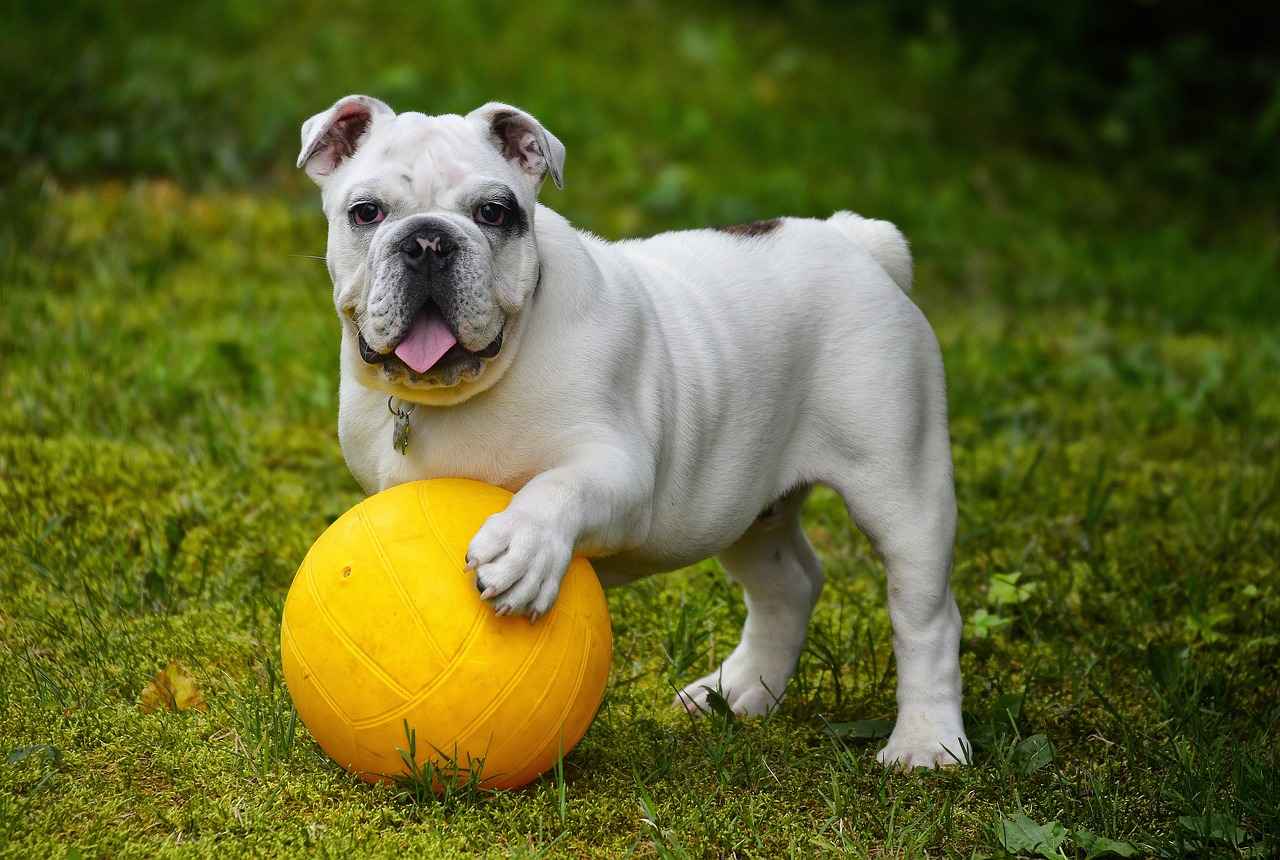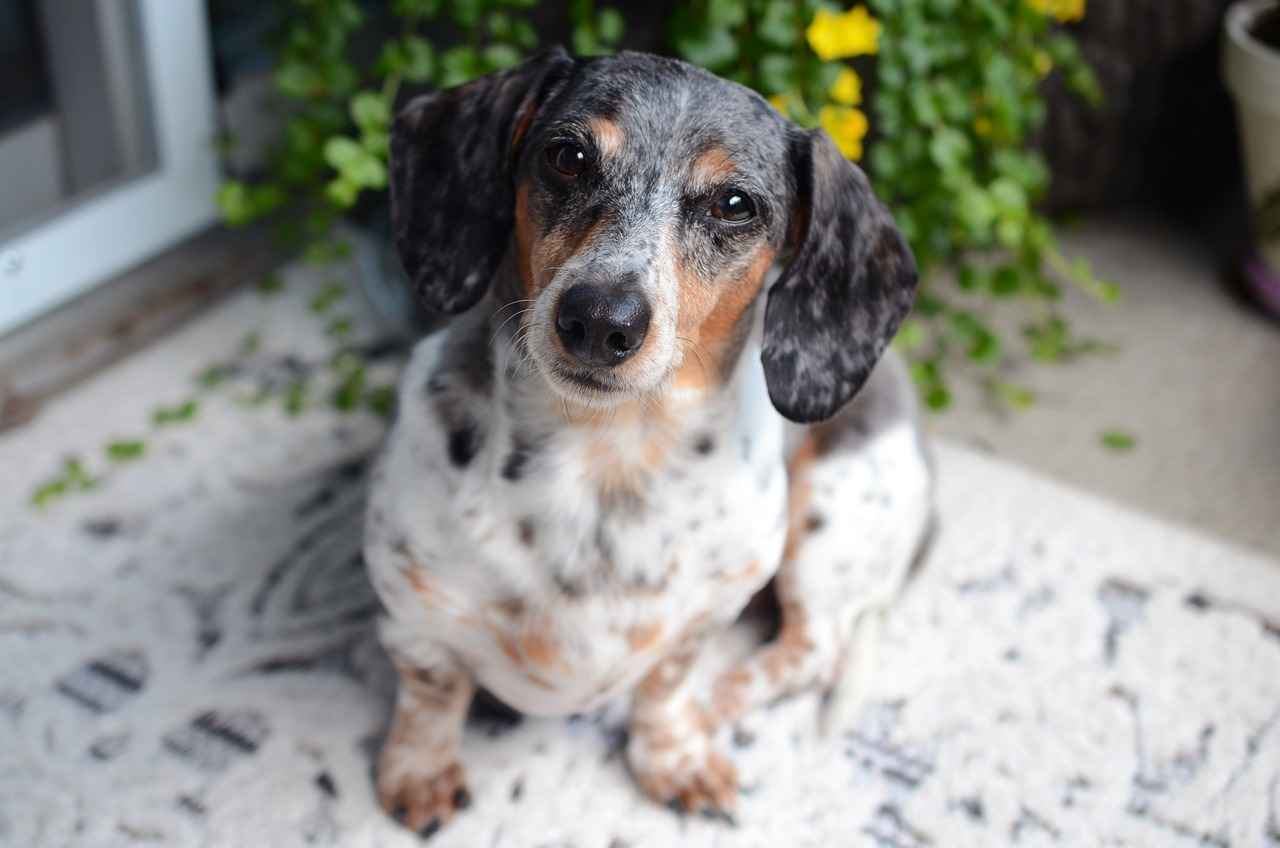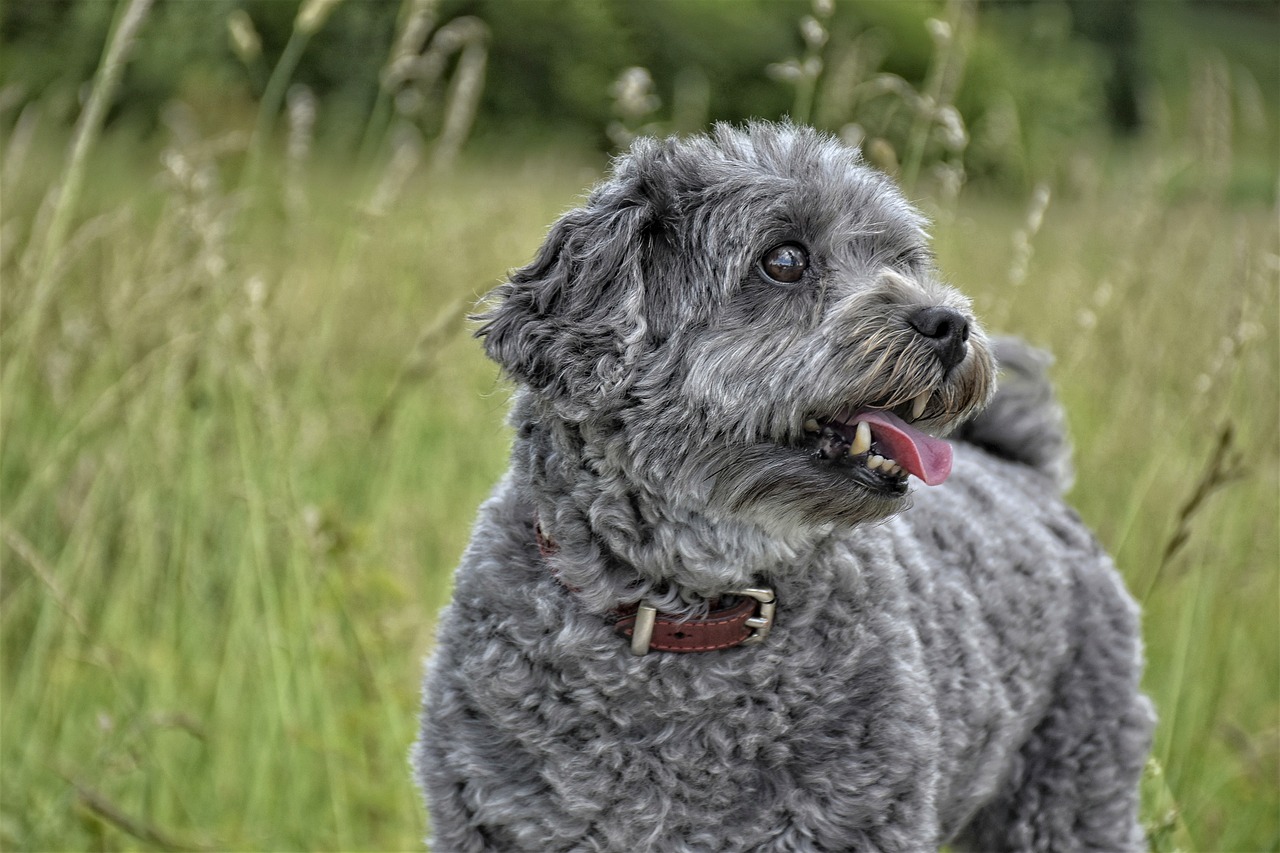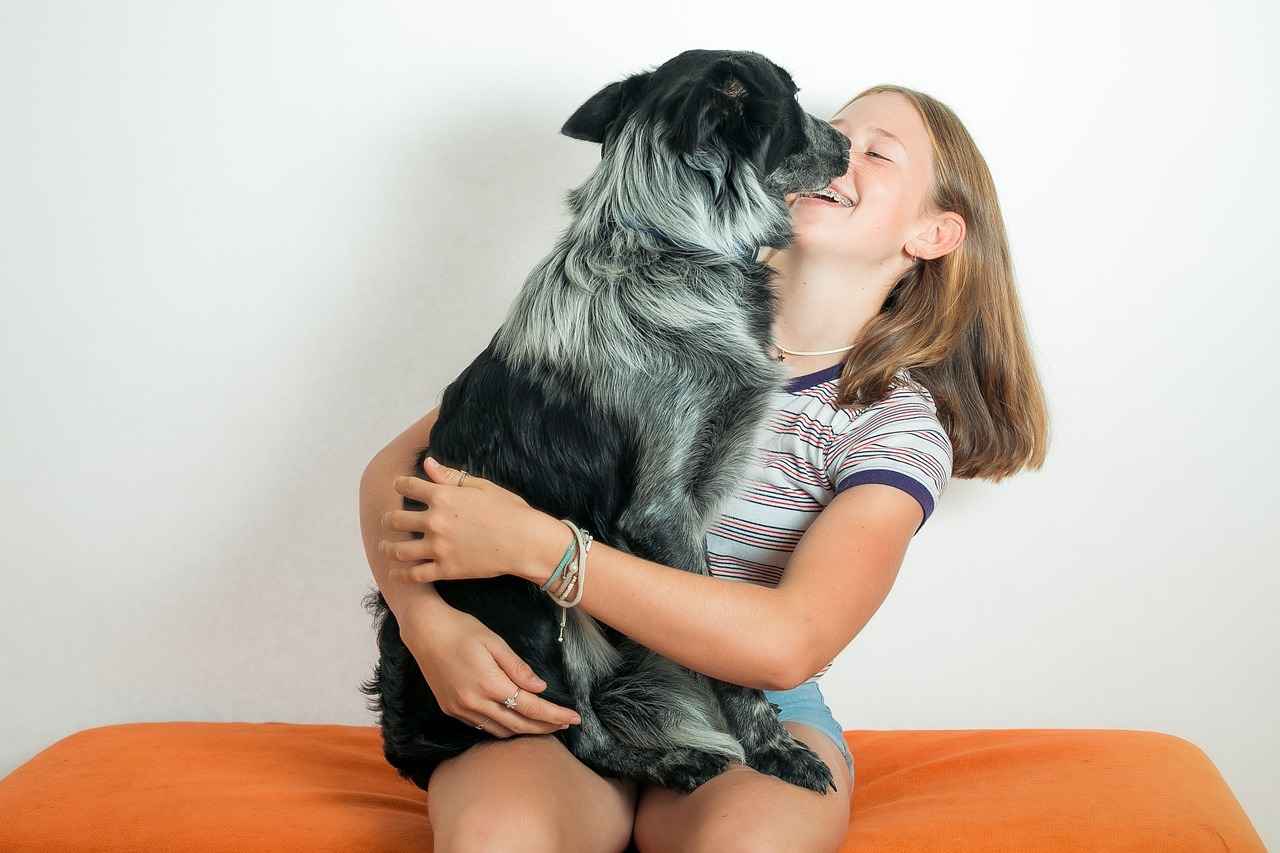As dogs enter their golden years, their comfort and health become increasingly important. With age, many dogs experience various health issues, particularly related to their joints and muscles. This is where orthopedic dog beds come into play, providing the necessary support to alleviate joint pain and enhance overall well-being.
Why Choose Orthopedic Dog Beds?
Orthopedic dog beds are specifically engineered to deliver superior support, particularly for aging dogs. These beds are designed to distribute weight evenly, which significantly reduces pressure on sensitive joints and enhances comfort during rest. This is crucial for dogs suffering from conditions such as arthritis or hip dysplasia.
Benefits of Orthopedic Dog Beds
- Enhanced Joint Support: Many orthopedic beds are made from memory foam or gel-infused materials that conform to a dog’s body shape, providing essential support for joints and muscles.
- Pressure Relief: By evenly distributing weight, these beds minimize pressure points, which is vital for dogs with chronic joint issues.
- Temperature Regulation: Some orthopedic beds come with cooling properties, ensuring that older dogs remain comfortable throughout the night.
- Improved Sleep Quality: A well-designed orthopedic bed can significantly enhance a dog’s sleep quality, leading to better overall health and vitality.
Choosing the Right Orthopedic Dog Bed
Selecting the appropriate orthopedic bed involves considering various factors:
- Size Considerations: Ensure the bed accommodates your dog’s size and sleeping habits to prevent discomfort.
- Material Types: Different materials like memory foam and gel foam offer varying levels of support, so understanding their benefits is crucial.
Maintenance and Care for Orthopedic Dog Beds
Proper maintenance is essential to preserve the integrity and hygiene of orthopedic dog beds:
- Cleaning Tips: Regularly clean the bed cover and foam to eliminate odors and allergens.
- Replacement Guidelines: Be aware of signs of wear; knowing when to replace the bed is important for maintaining comfort.
Conclusion: Investing in Your Dog’s Comfort
Investing in an orthopedic dog bed is a thoughtful decision that can significantly enhance the quality of life for older dogs, providing them with the comfort and support they deserve. By choosing the right bed, you can ensure that your furry friend enjoys their later years in comfort and style.

Why Choose Orthopedic Dog Beds?
As our beloved pets age, their comfort and health become paramount. Orthopedic dog beds are specifically crafted to offer the necessary support that older dogs need. These beds are not just a luxury; they are an essential investment in your dog’s well-being. By providing a supportive sleeping surface, orthopedic beds can significantly improve the quality of life for senior dogs, who may suffer from various joint issues and discomfort.
One of the primary reasons to choose orthopedic dog beds is their ability to distribute weight evenly. Unlike traditional dog beds, which may compress under pressure, orthopedic beds utilize advanced materials such as memory foam or gel-infused foam. These materials conform to the dog’s body, ensuring that pressure is alleviated from sensitive joints and muscles. This is especially important for dogs with conditions like arthritis or hip dysplasia, as it helps to minimize pain and discomfort.
- Enhanced Comfort: The supportive design of orthopedic beds promotes a restful sleep, allowing dogs to wake up feeling refreshed.
- Improved Mobility: By reducing pain and discomfort, these beds can help older dogs maintain better mobility, making everyday activities easier.
- Temperature Control: Many orthopedic beds come with cooling properties, which help regulate body temperature, keeping dogs comfortable throughout the night.
Furthermore, investing in an orthopedic dog bed can lead to better sleep quality. Just like humans, dogs require adequate rest to maintain their health and vitality. A well-designed orthopedic bed can significantly enhance a dog’s sleep patterns, leading to improved overall health.
In conclusion, choosing an orthopedic dog bed is a proactive step towards ensuring your aging dog’s comfort and health. By providing the necessary support and alleviating pressure on joints, these beds can enhance your dog’s quality of life, making them a worthwhile investment for any pet owner.

Benefits of Orthopedic Dog Beds
As our beloved dogs age, their needs change significantly, particularly regarding comfort and health. One of the best investments pet owners can make for their aging companions is an orthopedic dog bed. These beds are specifically designed to cater to the unique requirements of older dogs, ensuring they receive the support they need for a restful night’s sleep.
Orthopedic dog beds offer a multitude of advantages that can greatly enhance the quality of life for older dogs. Understanding these benefits is crucial for pet owners looking to improve their dog’s well-being.
- Enhanced Sleep Quality: Older dogs often struggle with sleep disturbances due to discomfort. Orthopedic beds provide a supportive surface that helps dogs achieve deeper, more restorative sleep.
- Pain Relief: Many senior dogs suffer from conditions like arthritis or hip dysplasia. Orthopedic beds are designed to alleviate pressure on joints, significantly reducing pain and discomfort during rest.
- Improved Mobility: With better support from an orthopedic bed, dogs can rise more easily and move around with less stiffness, promoting overall mobility and activity levels.
- Durability: High-quality orthopedic beds are built to last, with materials that withstand wear and tear, making them a cost-effective choice for long-term use.
- Temperature Regulation: Many orthopedic beds come with materials that help regulate temperature, keeping dogs comfortable in various climates and preventing overheating.
By investing in an orthopedic dog bed, pet owners can ensure their older dogs enjoy a comfortable, supportive place to rest. This not only improves their sleep quality but also contributes to their overall health and happiness.
In conclusion, the benefits of orthopedic dog beds are clear. From enhanced comfort and pain relief to improved mobility and durability, these specialized beds are essential for the well-being of older dogs. Making an informed choice can lead to a happier, healthier life for your furry friend.
Enhanced Joint Support
As our beloved dogs age, they often face various health challenges, particularly concerning their joints. Orthopedic dog beds are specifically engineered to address these issues, providing crucial support for aging pets. These beds typically incorporate advanced materials like memory foam or gel-infused foam, which are designed to conform to a dog’s unique body shape. This feature is particularly beneficial for older dogs, as it helps to alleviate pressure on sensitive joints and muscles.
One of the primary advantages of orthopedic beds is their ability to distribute a dog’s weight evenly across the surface. This weight distribution minimizes the strain on specific areas, reducing discomfort and promoting a more restful sleep. For dogs suffering from conditions such as arthritis or dysplasia, this level of support can significantly enhance their quality of life.
Moreover, the materials used in these beds often provide temperature regulation, which is essential for older dogs who may struggle with temperature fluctuations. Many orthopedic beds are designed with cooling properties that help maintain an optimal sleeping temperature, preventing overheating and ensuring a comfortable rest.
In addition to physical support, the psychological benefits of a cozy, supportive bed cannot be overlooked. When dogs feel comfortable and secure in their sleeping environment, it can lead to reduced anxiety and stress levels, contributing to their overall well-being.
In summary, investing in an orthopedic dog bed that offers enhanced joint support is a wise choice for pet owners with older dogs. Not only does it provide necessary comfort, but it also plays a vital role in maintaining their health and happiness as they age.
Pressure Relief
As dogs grow older, they often face various health challenges, particularly those related to their joints and overall comfort. One of the most effective solutions for this issue is the use of orthopedic dog beds. These beds are specifically designed to provide optimal support and comfort, which is essential for maintaining the quality of life for aging dogs.
One of the standout features of orthopedic dog beds is their ability to relieve pressure on sensitive areas of a dog’s body. By distributing weight evenly across the surface of the bed, these specialized beds minimize the formation of pressure points. This is particularly beneficial for dogs suffering from arthritis or other joint-related issues, as it helps to significantly reduce discomfort.
Moreover, the design of orthopedic beds promotes better circulation. When pressure points are minimized, blood flow is enhanced, allowing for more oxygen and nutrients to reach the muscles and joints. This is vital for older dogs, as improved circulation can lead to faster recovery from daily activities and a decrease in stiffness.
Additionally, the materials used in orthopedic beds, such as memory foam or gel-infused foam, are engineered to adapt to a dog’s unique body shape. This personalized support not only enhances comfort but also aids in maintaining proper spinal alignment, further contributing to overall joint health.
Furthermore, many orthopedic beds are designed with features that aid in temperature regulation, ensuring that dogs remain comfortable throughout the night. This is crucial, as a comfortable sleeping environment can lead to improved sleep quality, which is essential for an aging dog’s health.
In summary, the pressure relief provided by orthopedic dog beds is a critical factor for older dogs. By minimizing pressure points and promoting better circulation, these beds not only enhance comfort but also support the overall well-being of dogs, allowing them to enjoy a more active and fulfilling life.
Temperature Regulation
As our beloved dogs grow older, their comfort becomes paramount. Among the various features that enhance the quality of orthopedic dog beds, stands out as a crucial aspect. Many orthopedic dog beds are designed with cooling properties that help maintain an optimal body temperature, ensuring that older dogs remain comfortable throughout the night.
Older dogs often experience changes in their body temperature regulation due to age-related factors, making them more susceptible to overheating or feeling cold. The incorporation of cooling gel or breathable materials in orthopedic beds addresses this issue effectively. These beds are engineered to wick away moisture and disperse heat, creating a more comfortable sleeping environment.
Furthermore, maintaining a comfortable sleeping temperature is essential for ensuring restful sleep. Dogs that are too hot or cold may frequently shift positions, leading to disrupted rest and, consequently, a decline in overall health. By offering a balanced temperature, these beds can help enhance sleep quality, which is vital for the physical and mental well-being of older dogs.
In addition, some orthopedic beds feature adaptive materials that respond to the dog’s body heat. This means that as the dog lies on the bed, the material adjusts to provide a cooler sensation where needed, promoting a more relaxed sleep. Such innovations not only improve comfort but also contribute to joint health by allowing dogs to rest without the added stress of temperature discomfort.
In conclusion, when selecting an orthopedic dog bed for an older dog, it is essential to consider those with advanced temperature regulation features. This thoughtful choice can significantly impact your dog’s comfort, sleep quality, and overall health, allowing them to enjoy their golden years with ease.
Improved Sleep Quality
is crucial for the overall health and well-being of older dogs. As our furry companions age, they experience various physical changes that can impact their sleep patterns. A well-designed orthopedic bed can significantly enhance a dog’s sleep quality, leading to better overall health and vitality as they age.
When it comes to sleep, comfort is paramount. Orthopedic dog beds are specifically engineered to provide the necessary support that aging dogs require. These beds often utilize high-quality materials such as memory foam or gel-infused foam, which conform to the dog’s body shape. This design ensures that pressure is evenly distributed, reducing the likelihood of discomfort during sleep.
- Reduced Pain: Many older dogs suffer from joint pain or conditions like arthritis. The supportive nature of orthopedic beds helps to alleviate this pain, allowing dogs to rest more comfortably.
- Enhanced Mobility: A good night’s sleep can lead to improved mobility during the day. Dogs that sleep well are often more active and playful, contributing to a healthier lifestyle.
- Better Circulation: By minimizing pressure points, these beds promote better blood circulation, which is essential for maintaining overall health.
Moreover, the construction of orthopedic beds often includes features that promote temperature regulation. Many models incorporate cooling technologies, ensuring that dogs remain comfortable throughout the night, regardless of the season. This is particularly beneficial for older dogs, who may struggle to regulate their body temperature effectively.
In conclusion, investing in an orthopedic dog bed is not just about providing a place to sleep; it’s about enhancing the quality of life for our aging pets. By ensuring they have a comfortable, supportive place to rest, we can help them enjoy their golden years with greater vitality and happiness.

Choosing the Right Orthopedic Dog Bed
is crucial for ensuring your furry friend’s comfort and health, especially as they age. With numerous options available, it’s essential to consider various factors that align with your dog’s specific needs.
- Size: Selecting the right size is paramount. A bed that is too small can restrict movement, leading to discomfort. Measure your dog while they are lying down to determine the optimal bed dimensions.
- Material: The materials used in orthopedic beds greatly influence their effectiveness. Look for beds made from high-quality memory foam or gel-infused materials. These provide superior support by conforming to your dog’s body shape, reducing pressure on joints.
- Health Needs: Consider any specific health issues your dog may have. For example, dogs with arthritis may benefit from beds that offer enhanced support and pressure relief. Always consult your veterinarian for recommendations tailored to your dog’s condition.
In addition to these factors, it’s important to evaluate the bed’s durability and ease of maintenance. Orthopedic beds should be made from materials that withstand wear and tear, especially for active dogs. Furthermore, removable and washable covers can help maintain cleanliness and hygiene, contributing to your dog’s overall health.
Temperature control is another aspect to consider. Some orthopedic beds come with cooling gel layers that help regulate your dog’s body temperature, ensuring a comfortable sleep environment, particularly in warmer climates.
Ultimately, investing in the right orthopedic dog bed can lead to significant improvements in your dog’s quality of life. By taking the time to assess size, material, and health requirements, you can select a bed that not only meets their needs but also enhances their comfort and well-being.
Size Considerations
When selecting the perfect bed for your dog, play a crucial role in ensuring their comfort and well-being. Dogs come in various shapes and sizes, and their sleeping preferences can vary significantly. Therefore, it is essential to choose a bed that accommodates your dog’s unique dimensions and sleeping habits.
A bed that is too small can lead to discomfort and restlessness, which may affect your dog’s overall health. For instance, a cramped sleeping space can cause your dog to toss and turn throughout the night, leading to poor sleep quality. This is particularly important for older dogs, who may already be dealing with joint pain or other health issues.
When assessing the appropriate bed size, consider the following:
- Length and Width: Measure your dog from the tip of their nose to the base of their tail, and add a few inches to ensure they can stretch out comfortably. Also, consider their width, especially for larger breeds.
- Sleeping Position: Observe how your dog sleeps. Do they curl up in a ball, or do they prefer to sprawl out? A bed that allows for their natural sleeping position will enhance their comfort.
- Growth Potential: If you have a puppy, consider their expected size as an adult. Investing in a larger bed can save you money in the long run, as you won’t need to replace it as they grow.
In addition to size, the material of the bed also plays a significant role in your dog’s comfort. Look for beds with supportive materials that cater to their specific needs. For instance, memory foam or orthopedic beds are excellent choices for older dogs, providing the necessary support for their joints.
Ultimately, choosing the right bed size is about ensuring your dog gets the restful sleep they deserve. A well-sized bed not only promotes better sleep but also contributes to their overall health and happiness.
Material Types
When it comes to choosing the right orthopedic dog bed for your furry friend, understanding the is crucial. Different materials offer varying levels of support and comfort, which can significantly affect your dog’s health and well-being.
Memory foam is one of the most popular choices for orthopedic dog beds. It is designed to conform to your dog’s body shape, providing personalized support that helps alleviate pressure on joints. This is particularly beneficial for older dogs or those with arthritis, as it reduces discomfort and promotes better sleep quality.
Gel foam is another excellent option, combining the support of memory foam with cooling properties. This material helps regulate body temperature, making it ideal for dogs that tend to overheat while sleeping. The gel-infused layers provide a soft, yet supportive surface that enhances comfort and can aid in reducing joint pain.
Orthopedic foam is specifically designed to offer maximum support and durability. It is denser than standard foam, allowing it to withstand heavier weights without losing its shape. This makes it suitable for larger breeds or dogs that may be prone to joint issues.
- Polyester Fiberfill: Often used in budget-friendly options, polyester fiberfill is soft and lightweight but may not provide the same level of support as foam materials.
- Cotton: Some beds use cotton for a natural feel, but it may compress over time, leading to reduced support.
- Waterproof Covers: Many orthopedic beds come with waterproof covers to protect the foam from accidents and spills, ensuring longevity and hygiene.
By understanding the unique benefits of each material, pet owners can make informed decisions that prioritize their dog’s comfort and health. Choosing the right material type can lead to improved sleep quality, reduced pain, and enhanced mobility for your beloved pet.

Maintenance and Care for Orthopedic Dog Beds
Maintaining orthopedic dog beds is not just about cleanliness; it plays a vital role in ensuring the longevity and effectiveness of these essential products. Proper maintenance is crucial for preserving the integrity and hygiene of orthopedic dog beds, ensuring they remain effective and comfortable for long-term use. Regular upkeep can significantly enhance your dog’s comfort and health, especially for those who are older or suffering from joint issues.
Regular maintenance helps to:
- Prevent Allergens: Dust, dirt, and pet dander can accumulate in dog beds, leading to allergies and respiratory issues.
- Extend Lifespan: Taking care of the bed can prolong its life, saving you money in the long run.
- Ensure Comfort: A clean bed is essential for your dog’s comfort, helping them to relax and sleep better.
To keep your dog’s bed in top condition, consider the following cleaning tips:
- Wash the Cover: Most orthopedic beds come with removable covers. Wash these regularly in warm water to eliminate odors and allergens.
- Spot Clean the Foam: If the foam gets dirty, use a damp cloth and mild soap to clean it. Avoid soaking the foam, as it can damage its structure.
- Air Out the Bed: Regularly airing out the bed in a sunny spot can help eliminate odors and keep it fresh.
Even with proper maintenance, orthopedic dog beds will eventually need replacing. Here are some signs to look for:
- Visible Wear and Tear: If the bed shows signs of damage or wear, it may be time for a new one.
- Loss of Support: If the foam no longer returns to its original shape, it may not provide adequate support.
- Odors: Persistent odors that don’t go away after cleaning can signal that the bed needs to be replaced.
In conclusion, investing time in the maintenance and care of orthopedic dog beds not only enhances their lifespan but also ensures that your furry friend enjoys optimal comfort and health. Regular cleaning and timely replacements are key to providing the best environment for your aging companion.
Cleaning Tips
Maintaining a clean and hygienic sleeping environment for older dogs is essential for their overall health and well-being. Regular cleaning of the bed cover and foam can significantly reduce odors and allergens, creating a healthier atmosphere for your beloved pet. Here are some effective to ensure your dog’s orthopedic bed remains in top condition:
- Wash the Cover Frequently: Most orthopedic dog beds come with removable covers that can be machine washed. Aim to wash the cover every two weeks or more often if your dog has accidents or sheds heavily.
- Spot Clean Stains: For immediate cleaning, use a damp cloth and a mild detergent to spot clean any stains. This helps prevent odors from setting in.
- Vacuum Regularly: Use a vacuum cleaner with a pet hair attachment to remove hair, dirt, and dander from the bed. Regular vacuuming helps maintain cleanliness and reduces allergens.
- Deodorize the Foam: If the foam itself starts to smell, sprinkle some baking soda on it and let it sit for a few hours before vacuuming it off. This natural deodorizer can help eliminate unwanted odors.
- Check for Wear and Tear: Regularly inspect the foam for any signs of damage or wear. If the foam is compressed or has lost its shape, it may be time to replace the bed to ensure your dog continues to receive the support they need.
In addition to these cleaning tips, consider using a waterproof liner under the cover to protect the foam from moisture and stains. This extra layer can make cleaning easier and prolong the life of the bed.
By following these simple maintenance practices, you can help create a more comfortable and healthy sleeping environment for your older dog, ensuring they enjoy restful nights and improved well-being.
Replacement Guidelines
Knowing when to replace an orthopedic dog bed is crucial for ensuring your pet’s comfort and health. As dogs age, their needs change, and so does the effectiveness of their sleeping surfaces. Here are some key indicators that it may be time for a replacement:
- Visible Wear and Tear: Look for signs such as frayed edges, torn fabric, or noticeable lumps in the foam. These are clear indications that the bed is no longer providing the support your dog needs.
- Loss of Support: If your dog seems to sink into the bed more than before or struggles to get up after resting, it may be a sign that the bed has lost its structural integrity.
- Unpleasant Odors: Over time, orthopedic beds can absorb odors from pets. If washing the cover does not eliminate the smell, it might be time to invest in a new bed.
- Changes in Behavior: If your dog appears restless, has difficulty settling down, or shows signs of discomfort while lying down, these behavioral changes can indicate that their bed is no longer suitable.
- Age-Related Issues: For older dogs, any increase in joint pain or stiffness can be a sign that their current bed is not meeting their orthopedic needs.
Regularly assessing the condition of your dog’s bed ensures that they receive the necessary support for their joints and overall health. Replacing an old bed can lead to improved sleep quality, reduced pain, and enhanced mobility.
In conclusion, monitoring the state of your dog’s orthopedic bed is essential for their comfort and well-being. By recognizing the signs of wear and knowing when to replace it, you can provide your furry friend with a restful and supportive sleeping environment.

Conclusion: Investing in Your Dog’s Comfort
Investing in an orthopedic dog bed is not just a purchase; it is a commitment to your pet’s health and happiness. As our furry companions age, they often face various challenges, including joint pain, arthritis, and decreased mobility. An orthopedic dog bed is specifically designed to address these issues, offering the comfort and support that older dogs need to maintain their quality of life.
These specialized beds are constructed with high-quality materials, such as memory foam or gel-infused foam, which conform to the dog’s body, providing enhanced support for their joints and muscles. This is particularly important for larger breeds that may be more prone to joint problems. By distributing their weight evenly, orthopedic beds help to alleviate pressure points, which can lead to a more restful sleep.
Furthermore, many orthopedic dog beds are designed with temperature regulation features, ensuring that your pet stays comfortable throughout the night. This is crucial, especially for older dogs that may have difficulty adjusting to temperature changes. A good night’s sleep can significantly improve their overall health, energy levels, and mood.
When selecting an orthopedic dog bed, it’s essential to consider the size, material, and specific health needs of your dog. A bed that is too small can lead to discomfort, while the right size allows for stretching and movement during sleep. Additionally, regular maintenance, including cleaning and knowing when to replace the bed, is vital to ensure its longevity and effectiveness.
In conclusion, investing in an orthopedic dog bed is a thoughtful decision that significantly enhances the quality of life for older dogs. By providing the necessary support and comfort, you can help your furry friend enjoy their golden years with less pain and more joy.













